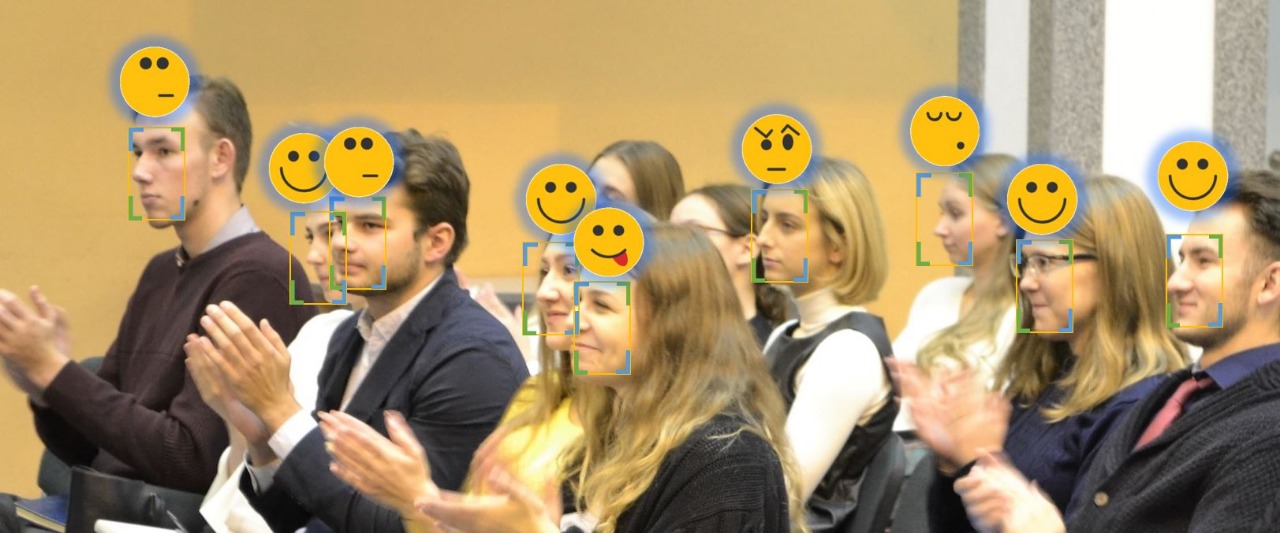
Young SUM Scientists Measure Student Happiness
For many research laboratories, it is a priority area to develop a face recognition system. Home to many excellent young scientists, the SUM can rightly be considered a site of hi-tech breakthroughs. In September, they are launching a student face and emotions recognition project, which is quite innovative for the university of management.
The project and science lab of the State University of Management – Digital Economics and High Technology – conducts comprehensive research in the area of artificial neuron network-based systems of face recognition. The developments use proprietary code created by the employees of the SUM Lab – Mikhail Sutulov and Maria Novatorova, and their own neuron network ICU (i.e. “I see you”).
The system currently under development in the SUM can identify a user using photos uploaded in advance. The author of the project, the SUM student Lev Yermakov, announced the project at the SUM Hackathon 2018. The primary work on it only began in spring 2019.
They are planning to use the technology first as a service for organising exhibitions and events and then integrate it in security systems. At the moment, its authors are working on a module to allow them identify a peson’s emotional state. Head of the lab Mikhail Nachevsky says that once the system has passed through all the training phases (it is AI-based), not even an artificial smile will be able to fool it. Thanks to emotion recognition, the researchers will detect the emotional state of students and establish connections with the day of the week, time of the day and the student’s timetable. These observations will serve as a basis for creating individual learning tracks implemented at SUM and also when introducing new educational practices.
The State University of Management is planning to install face recognition systems at the start of this academic year. The data collected will be demonstrated on a screen installed on the premises of the university. Any student will be able to come up to the screen, look at the camera, wait until it recognises him or her and give a detailed report: first, asking if it recognised the student correctly, and then – his or her timetable.
In the future, SUM scientists are planning to market an out-of-the-box solution and develop it further in two directions: recognising guests of restaurants and car salons to help the staff and teach face recognition to robots so that they could detect emotions and understand non-verbal communication.
Подпишись на тг-канал "Наш ГУУ" Дата публикации: 26.08.2019
Дата публикации: 26.08.2019


